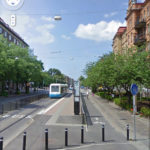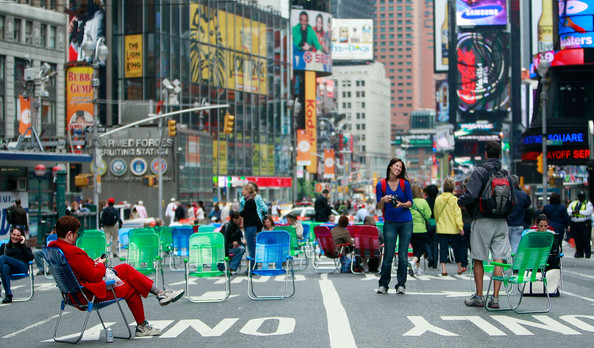Spatial justice on Södra Vägen
Sitting outside in the July sun at Frank’s Coffee, on Södra Vägen in Göteborg, Sweden is very different from sitting outside in the sun at Simon’s, on Massachusetts Avenue, Cambridge, US. OK, so the coffee’s much better at Simon’s, but in this blog entry, the coffee is not my main concern. I’m interested in the spatial dynamics of the street outside each cafe: Södra Vägen (South Street in English) and Massachusetts Avenue. At Frank’s and Simon’s, the streets are roughly the same width, but the streetscape is very different. See for yourself: click the link for each (Frank’s, Simon’s), click the red push pin, then click “street view” and do a 360 turn.)
At Frank’s on Södra Vägen, I watched in awe as pedestrians on the broad sidewalk, non-helmeted cyclists on the dedicated cycle way (not a painted lane in the road) and transit users in the two-way street cars flowed freely and regularly. The few trucks and private vehicles were relegated to a minor role in this streetscape. The street cars came in both directions every minute or so and seemed full. Basically, Göteborg has completed a modal shift: people on Södra Vägen and other streets were using other modes than the private car to get around, unlike Massachusetts Avenue. OK, so Cambridge has a generous arrangement of bike lanes, but the bike lanes are only painted white lines on the road, they are NOT for the most part, separated from the potential and actual harms of vehicular traffic (ever seen a cyclist get car doored? It’s not pretty). Cambridge has electric buses, and its share of the Massachusetts Bay Transportation Authority (MBTA) subway (Red and Green Lines) but these are not as frequent as the Göteborg street cars.
My point here is that the street is the most intimate and immediate of public spaces for people. We all use this public space, daily. In Göteborg, and many European cities, politicians and planners have allocated rights to the public space we call ‘the street’. These rights are in favor of the pedestrian, the cyclist, the public transit user. On Södra Vägen, I’d say these users get priority rights over about 80% of the streetscape. On Massachusetts Avenue, private vehicles easily get 80%.
Three thoughts.
First, while the Swedish politicians, planners and public don’t mention this exact phrase, what has happened is that spatial justice has been imposed on Södra Vägen and other Swedish streets by (re)allocating rights to space in favor of the least powerful users aka pedestrians, public transit users and cyclists. My future blogs will have more to say on different aspects of the concept of spatial justice, which I think has the potential to transform our thinking on planning cities, urban spaces, and sustainability.
Second, this inverts the typical U.S. prioritization of street rights where the bigger your vehicle, the more ‘rights’ you have (ever tried your arguing your street rights with a MBTA bus driver?). However, in some U.S. cities there are positive changes. In New York, on Broadway for instance, “roughly three and a half miles of the streets moving lanes have vanished nearly half of the total between Columbus Circle and Union Square and in some spots automobile traffic has dropped by a third. Dozens of parking spaces are gone, replaced by bicycle lanes and pedestrian picnic areas” (See “Broadway Is Busy, With Pedestrians, if Not Car Traffic,” New York Times, Sept 5, 2010). The picture below captures something of the sense of possibility in re-imagining (e)quality on the street.
Third, and most important, this street level spatial justice, this democratization of the street through the redistribution of rights to (and in) public space may make the street look physically different but I think it also fundamentally rewires our brains, affecting the way we think. If the street is our most commonly used public space, the one we use each day and it has been democratized in the way Södra Vägen has, and Massachusetts Avenue hasn’t, what does this say to the public who use these streets/spaces daily and become accultured to spatial justice on Södra Vägen or spatial injustice on Massachusetts Avenue? How does daily use of a a democtratized/undemoctratized street affect our behavior? How does a child growing up in a Swedish city, who encounters the more democratic, spatially just environment of a street like Södra Vägen differ from his/her counterpart in a US city who has experienced the complete opposite?
These and other questions will inform future blogs………………..



New York City has taken monumental first-steps at creating a pedestrian-oriented cities. The city and some independent organizations have much bolder long-term plans. My favorite is this detailed vision for an auto-free 42nd St. with streetcar:
http://www.vision42.org/
[…] to explore the theme of spatial justice as it relates to the streetscape (see earlier blog: Spatial justice on Södra Vägen). The poster, as seen below, was entitled “Democratizing Streetscapes: Rethinking Streets as […]